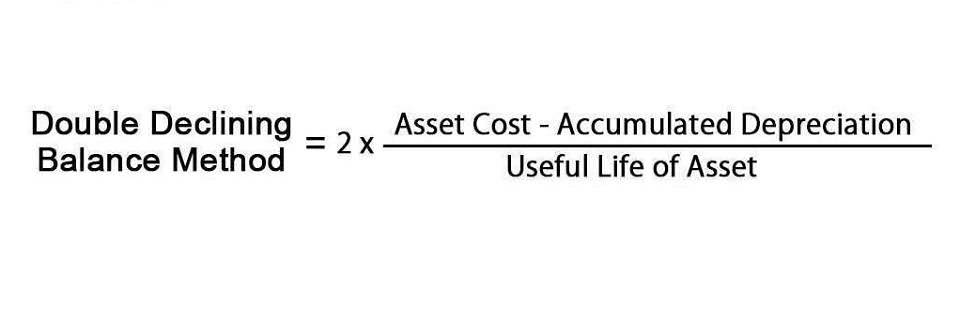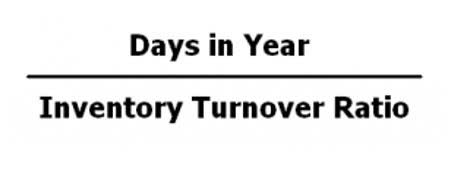Content

In either case, total assets should equal the total liabilities plus owners’ equity. This refers to a company’s total profits after paying off dividends to shareholders. A negative number could indicate your company’s assets are less than its liabilities. In some cases, this could mean your company might be facing potential bankruptcy. Once you determine the stockholder’s equity, you can ascertain whether or not you need to make changes for the betterment of your corporation. In this article, we will define stockholder’s equity, how to calculate it and useful tips for improving it. This is the cumulative amount of income for a few items that are not reported on the corporation’s income statement.

Understanding stockholders’ equity is one way investors can learn about the financial health of a firm. For most companies, higher stockholders’ equity indicates more stable finances and more flexibility in the case of an economic or financial downturn. Lower stockholders’ equity is sometimes a sign that a firm needs to reduce its liabilities. Shareholders’ equity on a balance sheet is adjusted for a number of items. For instance, the balance sheet has a section called “Other Comprehensive Income.” It refers to revenues, expenses, gains, and losses; these aren’t included in net income.
Examples Of Shareholder Equity
Calculating stockholders equity is an important step in financial modeling. This is usually one of the last steps in forecasting the balance sheet items. Below is an example screenshot of a financial model where you can see the shareholders equity line completed on the balance sheet. The accounting equation defines a company’s total assets as the sum of its liabilities and shareholders’ equity.
- Designed for business owners, CO— is a site that connects like minds and delivers actionable insights for next-level growth.
- It’s important to remember that calculating the stockholder’s equity can be beneficial, but must be used alongside other tools to provide you with an accurate depiction of your company’s net worth.
- The net assets of a corporation as owned by stockholders in capital stock, capital surplus, and undistributed earnings.
- On the flip side, if the company adds to retained earnings because it made money, stockholders’ equity may increase.
- If used in conjunction with other tools and metrics, the investor can accurately analyze the health of an organization.
Rule 3-04 permits the disclosure of changes in stockholders’ equity (including dividend-per-share amounts) to be made either in a separate financial statement or in the notes to the financial statements. Stockholders’ equity, also known as shareholders’ equity, represents the value of each stockholder’s ownership or share of a given company. As a business, it’s important to highlight these amounts and their changes throughout a given period of time — typically from the beginning to the end of the year.
Formula For Stockholders’ Equity
It is the company’s remaining value if it sold all of its assets and paid all of its liabilities. Stockholders’ equity is listed on a company’s balance sheet, and investors use this vital information to evaluate the financial health of a business.
- When a company issues new shares, this amount will grow, and if the company performs a buy-back of its shares, this amount will reduce.
- Alternatively, the single reconciliation could be shown in the notes to the financial statements.
- The effect will be to increase stockholders’ equity and decrease debt, at the expense of diluting existing shares of common stock.
- This amount appears on the balance sheet as well as the statement of stockholders’ equity.
To do so, you should create a stockholders’ equity statement, which is a financial document that outlines your total capital per shareholder. Stockholders’ equity can be calculated by subtracting the total liabilities of a business from total assets or as the sum of share capital and retained earnings minus treasury shares. Share capital includes all contributions from the company’s stockholders to purchase shares in the company. Retained earnings are the accumulated profits, or business earnings minus dividends paid out to shareholders. Treasury shares are those that have been issued by the company but then later repurchased. These must be deducted from stockholders’ equity, as they’re owned by the company.
What Does Negative Shareholders’ Equity Mean?
If you increase your corporation’s sales revenue, this will positively affect your retained earnings, as well. When used with other metrics, stockholder’s equity can be a great way to determine a business’s financial standing. In general, knowing the stockholder’s equity allows you to quantify your company’s net worth. For example, if your stockholder’s equity is a positive number, this means your company will be able to pay off its liabilities and you should be in good financial standing. Stockholders’ equity and liabilities are also seen as the claims to the corporation’s assets. However, the stockholders’ claim comes after the liabilities have been paid. Stockholders’ equity can be referred to as the book value of a business, since it theoretically represents the residual value of the entity if all liabilities were to be paid for with existing assets.
Do you think that the equity inflow would have been different if passive funds did not exist?
After all, all the stock in the world is held by all the stockholders in the world, no matter their affiliation.
— baufinanciaphaster ? (@bauhiniacapital) November 29, 2024
This shows you the business’s net income divided by its shareholder equity, to measure the balance between investor equity and profit. It’s used in financial modeling to forecast future balance sheet items based on past performance. How do a company’s shareholders evaluate their equity in the business?
Share Capital
She will check this again next quarter to track the company’s performance. Keep in mind that assets are things the company owns and liabilities are what is owed, like loans. The balance sheet provides creditors, investors, and analysts with information on company’s resources and its sources of capital .

The terms law and equity are frequently used in the law books and require explanation. In Ireland they have palpably and greatly benefited every class but the stockholders, and these they have well nigh ruined. As a Premium user you get access to background information and details about the release of this statistic. As a Premium user you get access to the detailed source references and background information about this statistic. Then you will be able to mark statistics as favourites and use personal statistics alerts.
Stockholders Equity Formula Calculator
Net Working Capital is the difference between a company’s current assets and current liabilities on its balance sheet. Equity typically refers to shareholders’ equity, which represents the residual value to shareholders after debts and liabilities have been settled. Locate total shareholder’s equity and add the number to total liabilities. The stockholders’ equity of Berkshire Hathaway increased year-on-year from 2024 to 2024. Berkshire Hathaway’s stockholders’ equity amounted to approximately 451.3 billion U.S. dollars in 2024, an increase of about 22.8 billion U.S. dollars.
Dilutive common shares from dilutive instruments, such as stock options or stock warrants, are added to the basic equation’s denominator , which decreases the ending result of earnings per share. So, basic earnings per share tends to have a higher value than diluted earnings per share. Diluted earnings per share is the most conservative per share earnings number because the equation takes into account the largest number of common shares that could be outstanding. For a statement of stockholders’ equity, this is simply a section of a company’s balance sheet, one of the three primary financial statements, that clearly calculates and displays the stockholder equity.
Quarterly Financial Report: U S Corporations: Scientific Research And Development Services: Stockholders’ Equity Qfr327547usno
It’s important to remember that calculating the stockholder’s equity can be beneficial, but must be used alongside other tools to provide you with an accurate depiction of your company’s net worth. GoCardless is authorised by the Financial Conduct Authority under the Payment Services Regulations 2024, registration number , for the provision of payment services.
- Companies have no obligation whatsoever to pay out dividends until they have been formally declared by the board.
- In liquidation, physical asset values have been reduced and other extraordinary conditions exist.
- Common stock is a type of security that gives the owner partial ownership in a corporation.
- Long-term assets are the value of the capital assets and property such as patents, buildings, equipment and notes receivable.
- The $1,000,000 deducted from total stockholders’ equity represents the par value of the preferred stock as the preferred stock is not callable.
- It normally also provides information about the future earnings capacity of a company’s assets as well as an indication of cash flows that may come from receivables and inventories.
A stockholders’ equity statement is a financial document that illustrates the changes in value to a shareholder’s ownership in a company. It is a more risky investment than debt or preferred stock because if the business is liquidated, debt holders and preferred stockholders will be paid before common stockholders. Remember, equity is simply the difference between the company’s assets and the liabilities the company has taken out against those assets.
This amount appears in the firm’s balance sheet, as well as the statement of stockholders’ equity. When making investment decisions, stockholders’ equity is not the only thing you should look at. A single data point in a company’s financial statement cannot tell you whether or not they are a good risk.

Another reason for setting a low par value is that when a company issues shares, it cannot sell them to investors at less than par value. Our guide will both define and explain stockholders equity the components of a stockholders’ equity statement. It is generally best for any business other than possibly a sole proprietorship to have a statement of stockholders’ equity.
What is a good ROIC ratio?
A company is thought to be creating value if its ROIC exceeds 2% and destroying value if it is less than 2%.
In events of liquidation, equity holders are last in line behind debt holders to receive any payments. Therefore, debt holders are not very interested in the value of equity beyond the general amount of equity to determine overall solvency. Shareholders, however, are concerned with both liabilities and equity accounts because stockholders equity can only be paid after bondholders have been paid. For example, assume that ABC company has total assets of $2.6 million and total liabilities of $920,000.
The cost of treasury stocks is deducted from stockholders’ equity. Common stock includes all shares issued, including those reacquired as treasury stock. Since treasury stock is not currently owned by stockholders, it should not be included as part of their worth. Therefore, the value of treasury stock shares is subtracted out to arrive at total stockholders’ equity. The share capital represents contributions from stockholders gathered through the issuance of shares. It is divided into two separate accounts common stock and preferred stock. Diluted Earnings Per Share is a company’s earnings per share calculated using fully diluted common shares outstanding (i.e. which includes the impact of instruments such as stock option grants and convertible bonds).
The result is divided between the value of the shares that fall under “common stock – par value” and the excess value over par is reported as “common stock – additional paid-in-capital”. The value of the conversion feature is not reported due to the uncertainty of when the conversion may occur, if at all. In short, the Equity portion of the accounting equation is the amount left over after liabilities are deducted from assets and represents the residual value of assets minus liabilities. Owner’s or stockholders’ equity also reports the amounts invested into the company by the owners plus the cumulative net income of the company that has not been withdrawn or distributed to the owners. When there are shareholders this distribution comes in the form of dividends. Let’s look at the expanded accounting equation to clarify what constitutes Owners’ or Shareholders’ Equity before we examine its presentation on the Balance Sheet and Statement of Owners’ Equity.
All the information needed to compute a company’s shareholder equity is available on its balance sheet. Current assets are assets that can be converted to cash within a year (e.g., cash, accounts receivable, inventory, et al.). Long-term assets are assets that cannot be converted to cash or consumed within a year (e.g. investments; property, plant, and equipment; and intangibles, such as patents). Share capital refers to contributions by investors, in the form of common and preferred shares. Reserves include share premiums, unrealized gains, and appropriations. While retained earnings refer to accumulated profits which are unappropriated.
How do you calculate stockholders equity?
Stockholders’ equity can be calculated by subtracting the total liabilities of a business from total assets or as the sum of share capital and retained earnings minus treasury shares.
A statement of stockholders’ equity is generally calculated by calculating the difference between a given company’s total assets and liabilities. The stockholders’ equity, also known as shareholders’ equity, represents the residual amount that the business owners would receive after all the assets are liquidated and all the debts are paid.
Retained earningsare the profits that the company has accumulated over time. Each year the company makes a profit and doesn’t distribute the cash to the investors, it accumulates in the retained earnings account. You can think of this account like the amount of money investors left in the company after all of the expenses were paid. The conversion feature in convertible stock adds an option of acquiring common shares, which has certain advantages, such as voting rights and unlimited access to company earnings. If a shareholder makes a contribution to a business in the form of cash or other means, their investment’s value in the business along with the value of each outstanding share will rise.
Hewlett Packard : HPE Reports Fiscal 2024 Fourth Quarter and Full-Year Results – Form 8-K – marketscreener.com
Hewlett Packard : HPE Reports Fiscal 2024 Fourth Quarter and Full-Year Results – Form 8-K.
Posted: Tue, 30 Nov 2024 21:31:31 GMT [source]
Convertible bonds can be exchanged for a fixed number of common shares. Corporations can issue convertible bonds that have mandatory conversion provisions.
Author: Mary Fortune
